 Into the scald tank. Water 145 degrees which felt good on this cold morning.
Into the scald tank. Water 145 degrees which felt good on this cold morning. 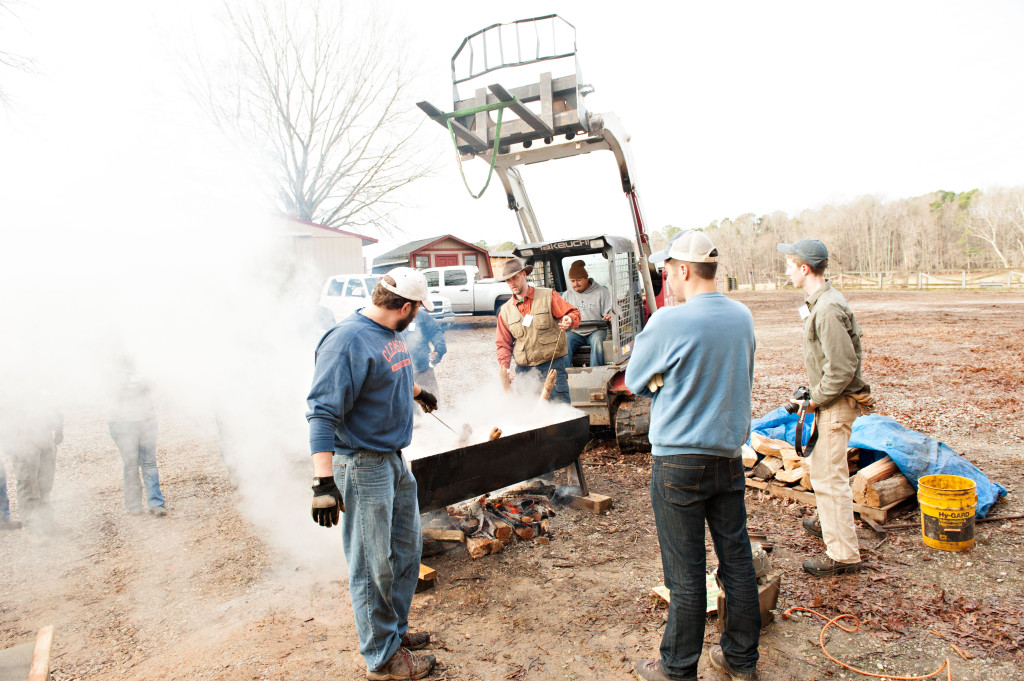
Working the hog back and forth during the scald to make sure that every area of skin was properly scalded.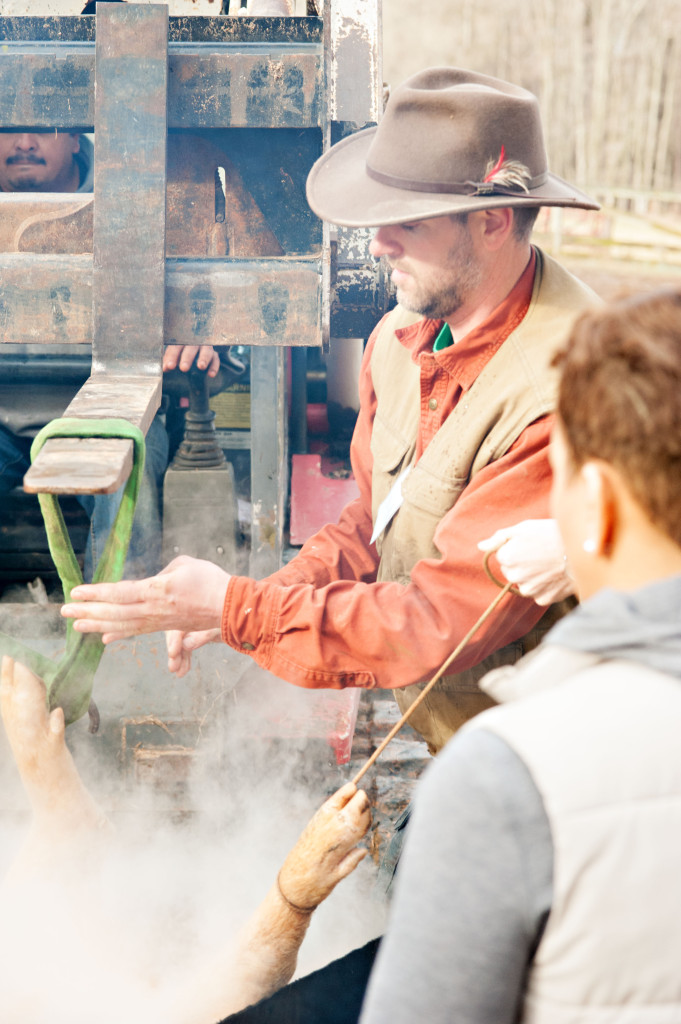
Getting ready to come back out
7125 Old Stage Road Raleigh NC 919-322-0197
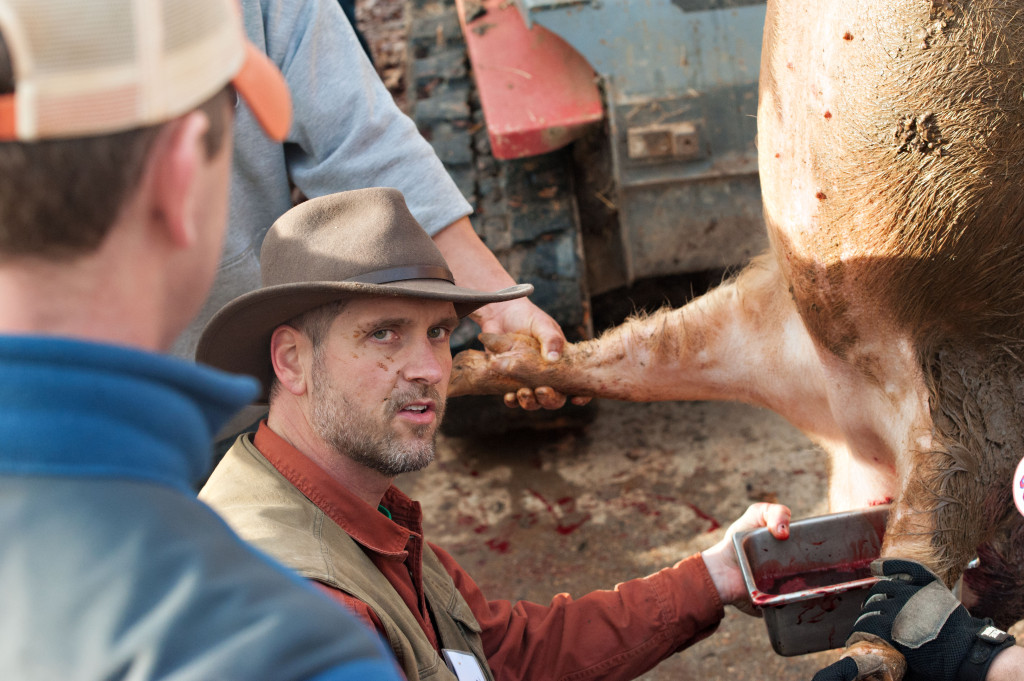 Talking it through as the blood drains. You can see that it was a messy affair getting the pig on the hook by the mud on my face, which stayed there the rest of the day. I’ve learned now that students won’t always tell you when you’ve screwed up, better check the mirror occasionally. Of course darling SWMBO and the interns didn’t tell me either.
Talking it through as the blood drains. You can see that it was a messy affair getting the pig on the hook by the mud on my face, which stayed there the rest of the day. I’ve learned now that students won’t always tell you when you’ve screwed up, better check the mirror occasionally. Of course darling SWMBO and the interns didn’t tell me either.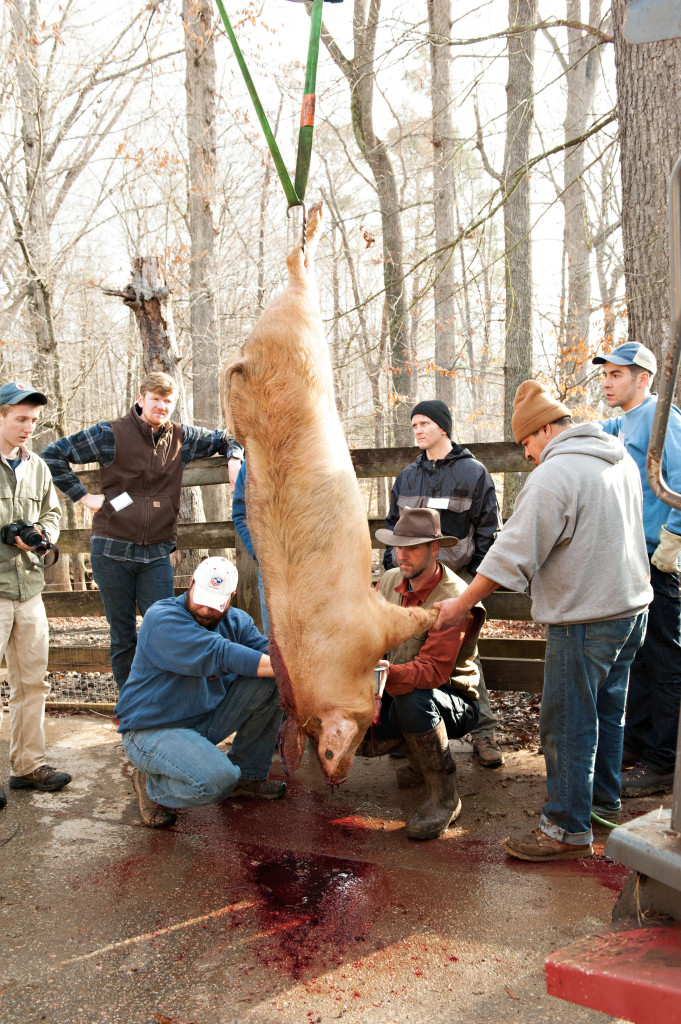 Finishing up the bleed. The pig is stunned by the gunshot and knocked unconscious. Bleeding it is what actually kills the pig.
Finishing up the bleed. The pig is stunned by the gunshot and knocked unconscious. Bleeding it is what actually kills the pig.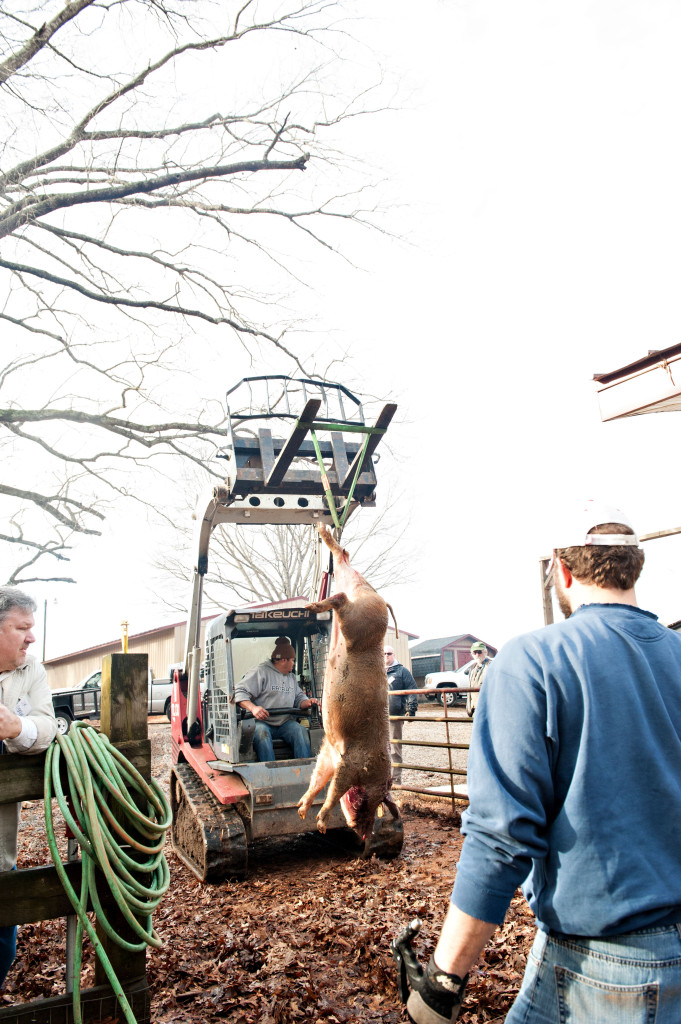
Miguel moving over to the scald tank. Although this was an “old-fashioned hog killing” we did utilize modern conveniences like a tractor and an electric hoist to make the work easier. It didn’t seem to take anything away from the process.
 Get the hook in quickly so that we can hoist the hog in the air and bleed him properly. It took some muscle to hold him still while we worked.
Get the hook in quickly so that we can hoist the hog in the air and bleed him properly. It took some muscle to hold him still while we worked.
Success. Now to wash the throat area off for the stick.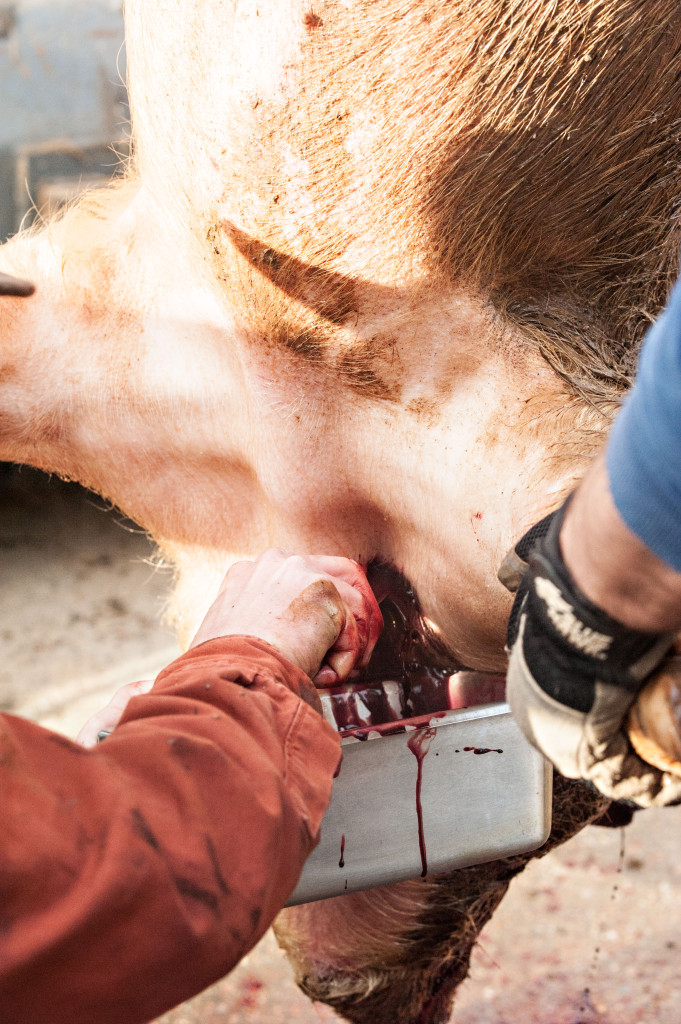
A successful stick. Part of the blood was given to Brent for blood sausage later in the day, part was taken to a friend who is a chef so that he can make the same thing.
The unpleasant part of this job. Especially when the first shot didn’t do the job. Turns out, after a postmortem inspection that I shot too low on the forehead. No excuse and certainly not how you want to do it on class day. My shot was right between the eyes, it should have been about an inch or so higher. Of course the only time I’ve ever done this would be on class day. At least everyone saw how not to do it. 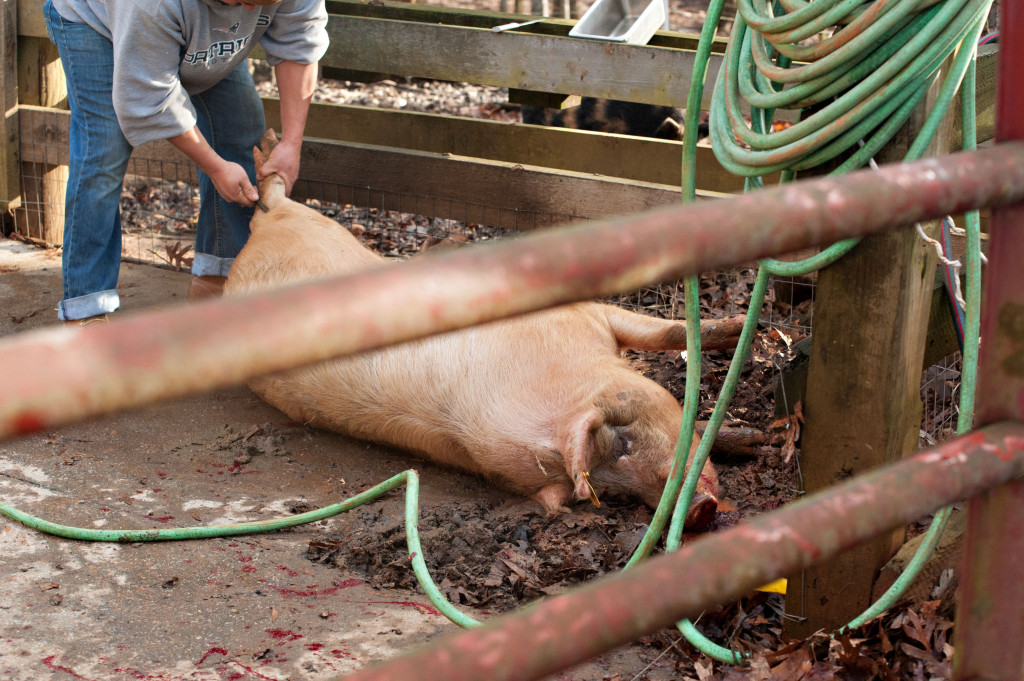
A shot behind the ear did the trick. Now we can go to work.
 Showing the walk in cooler that we built.
Showing the walk in cooler that we built.
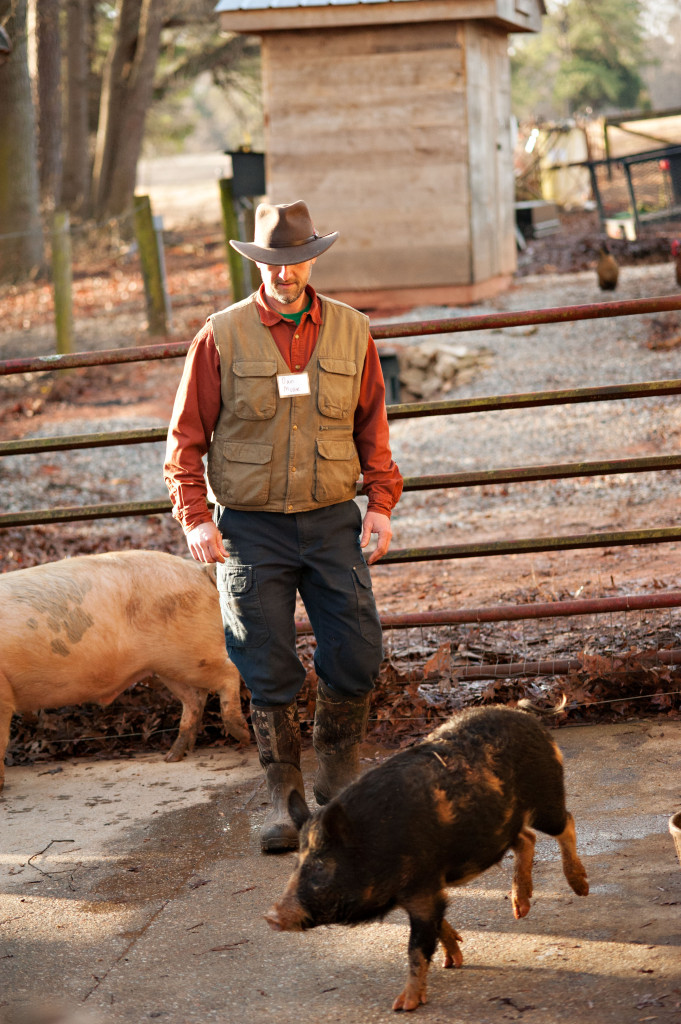 Demonstrating how hard it is to separate pigs just by unassisted methods. Hint, it doesn’t work.
Demonstrating how hard it is to separate pigs just by unassisted methods. Hint, it doesn’t work. 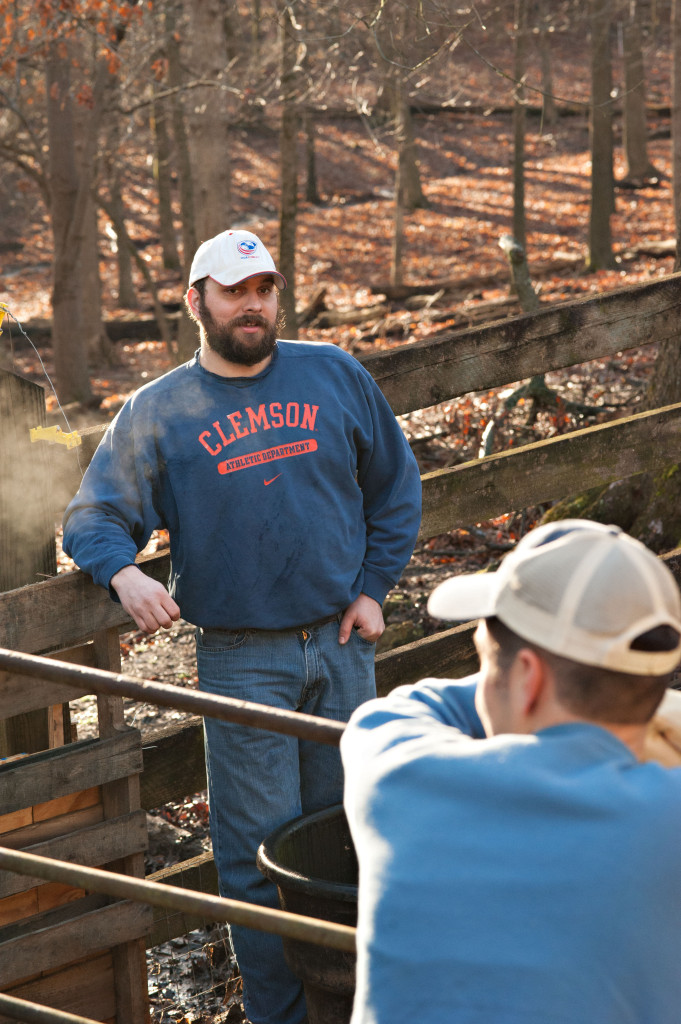
Intern John taking a break after a couple of laps with the pigs. We were getting the pig boards at this moment so he’s not slacking. 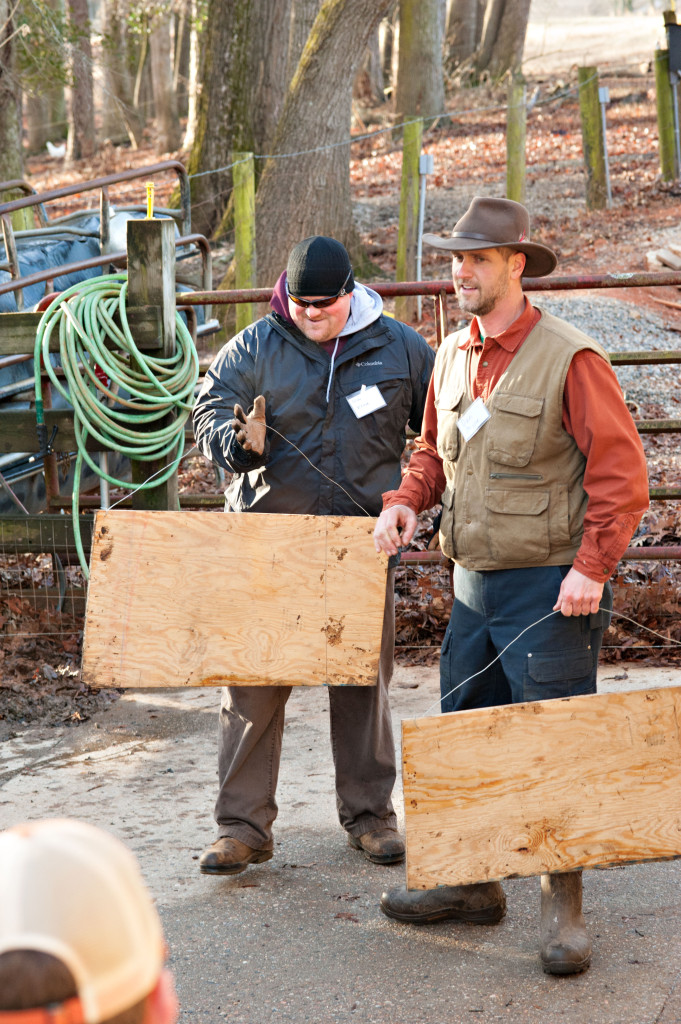 Intern Brian and I, now working the pigs with our home-made pig boards. The difference in working the pigs was dramatic.
Intern Brian and I, now working the pigs with our home-made pig boards. The difference in working the pigs was dramatic.
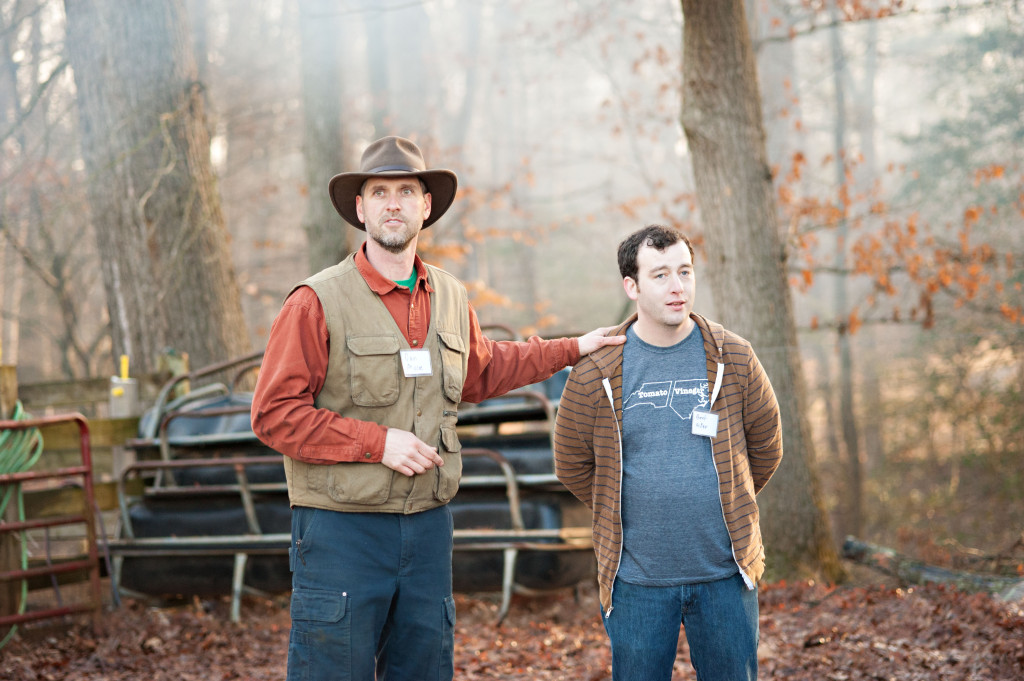 In addition to the hog killing itself, Brent Miller came and taught cooking and prep for various traditional killing day fare. The pate was yummy!
In addition to the hog killing itself, Brent Miller came and taught cooking and prep for various traditional killing day fare. The pate was yummy!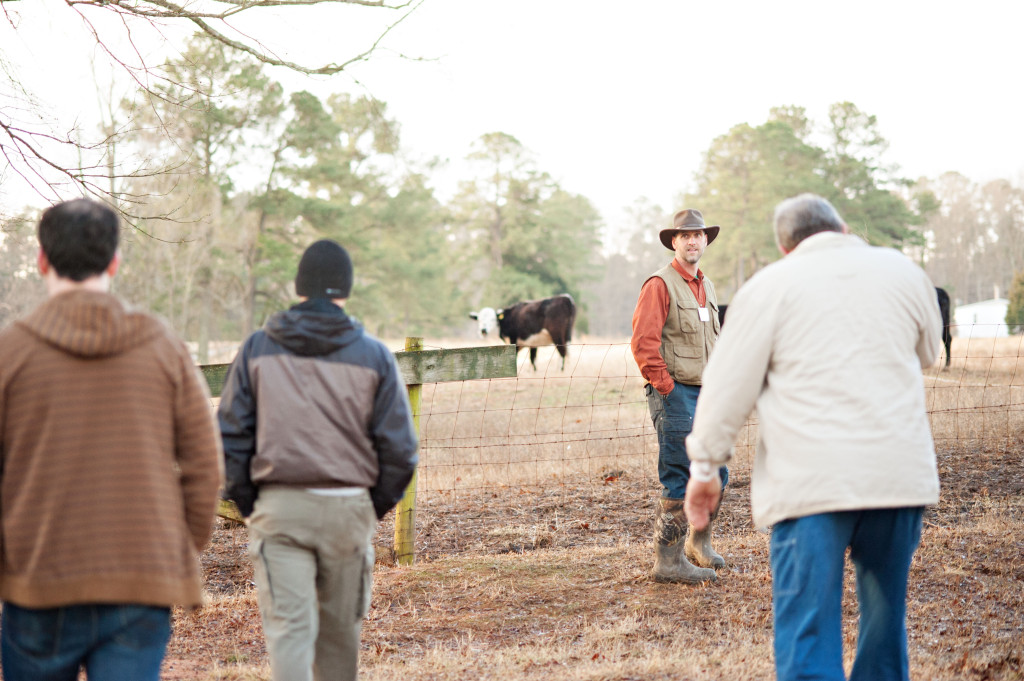
The walking tour. This is where we made it over to the cows and discussed cattle management and pasture rotation.
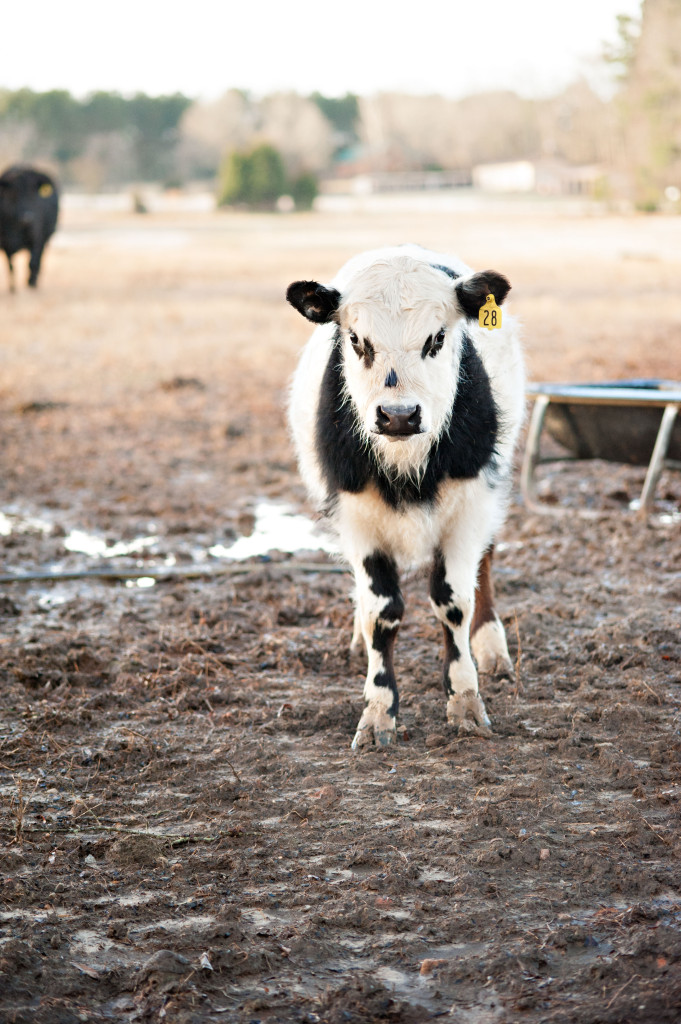 Owen, one of the ninja babies, came up to see what we were doing.
Owen, one of the ninja babies, came up to see what we were doing.
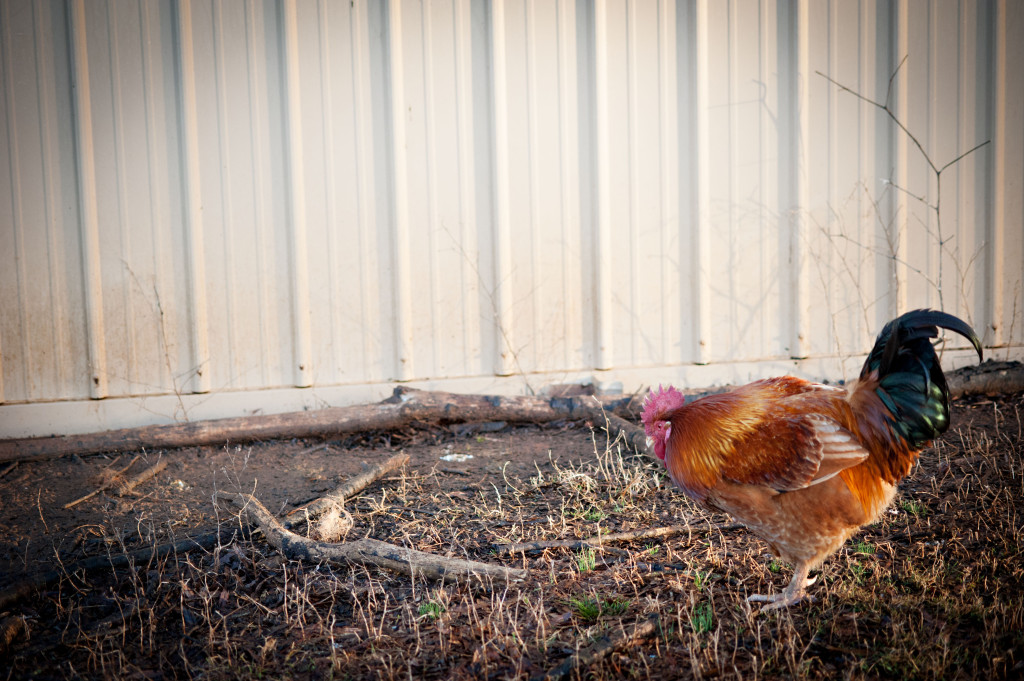 One of our roosters, keeping an eye on everyone.
One of our roosters, keeping an eye on everyone.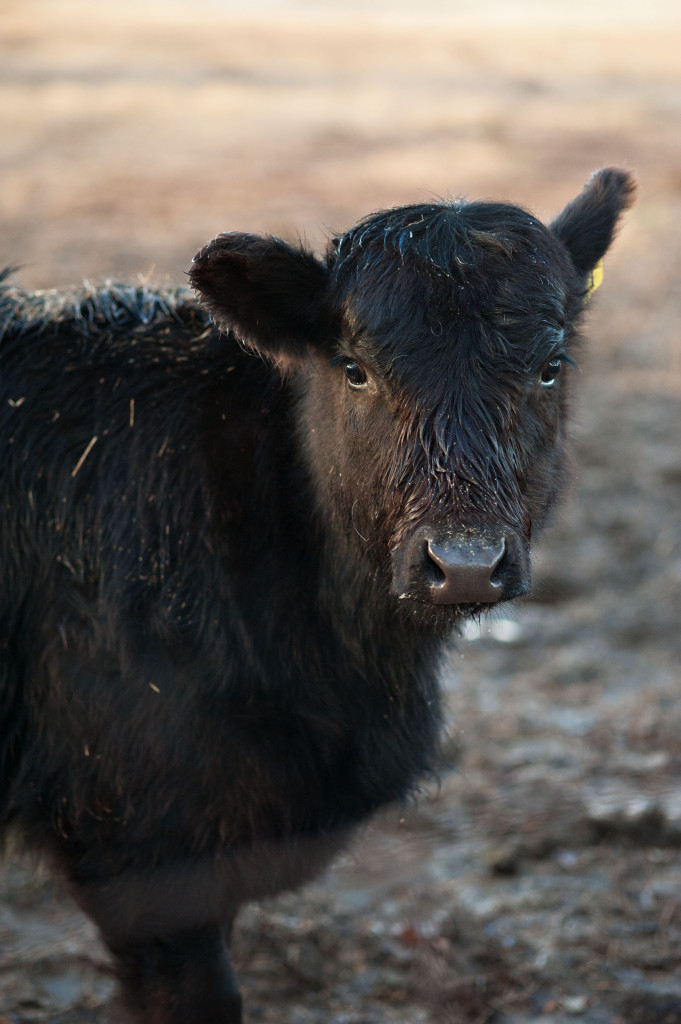
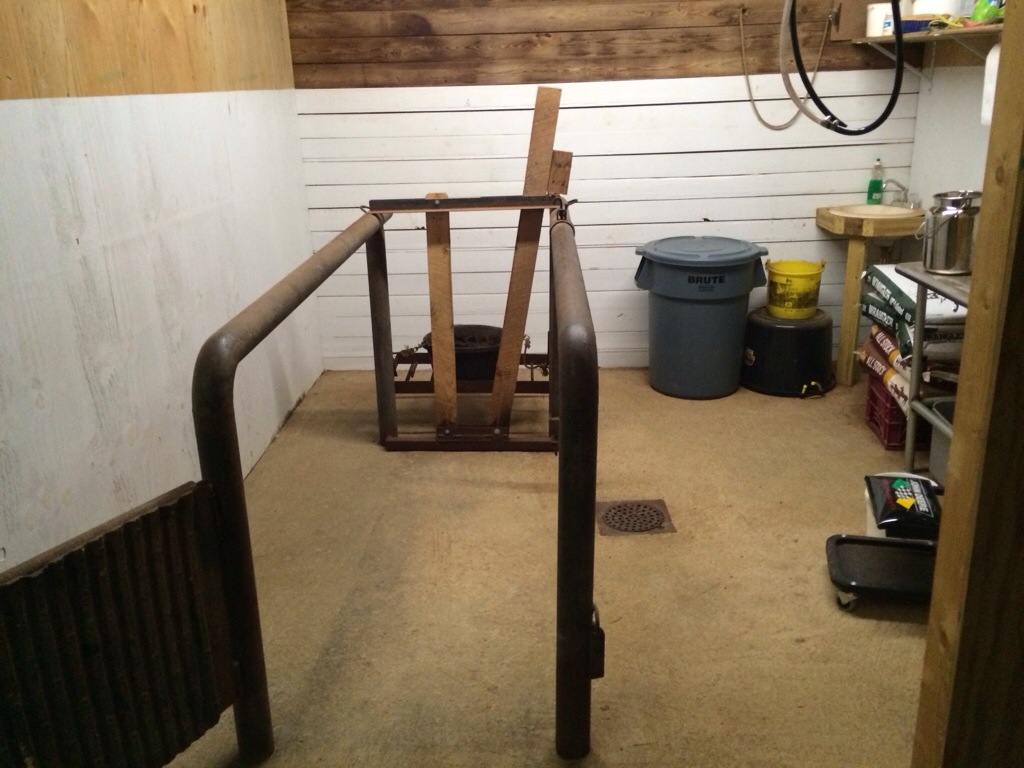
Today begins the last period of milking Dottie for this lactation. Sunday morning will be our last milking. Then we will dry her off and give her two months to eat and put some weight on. When we received her she was way down on her body condition and it’s the nature of Jerseys that the more food you throw at them, the more milk they make. We have to take advantage of this two month window while she isn’t milking to put some meat on her bones. And to grow the baby she’s carrying in preparation for birth.
Not milking is also a time off for the milkers. To sleep in, or to get going earlier not waiting for milking depending on your sleep schedule. This morning I could have slept a bit more myself.
Spring is coming. Hopefully during these two months off Dottie and the milking crew will have a good time of it.
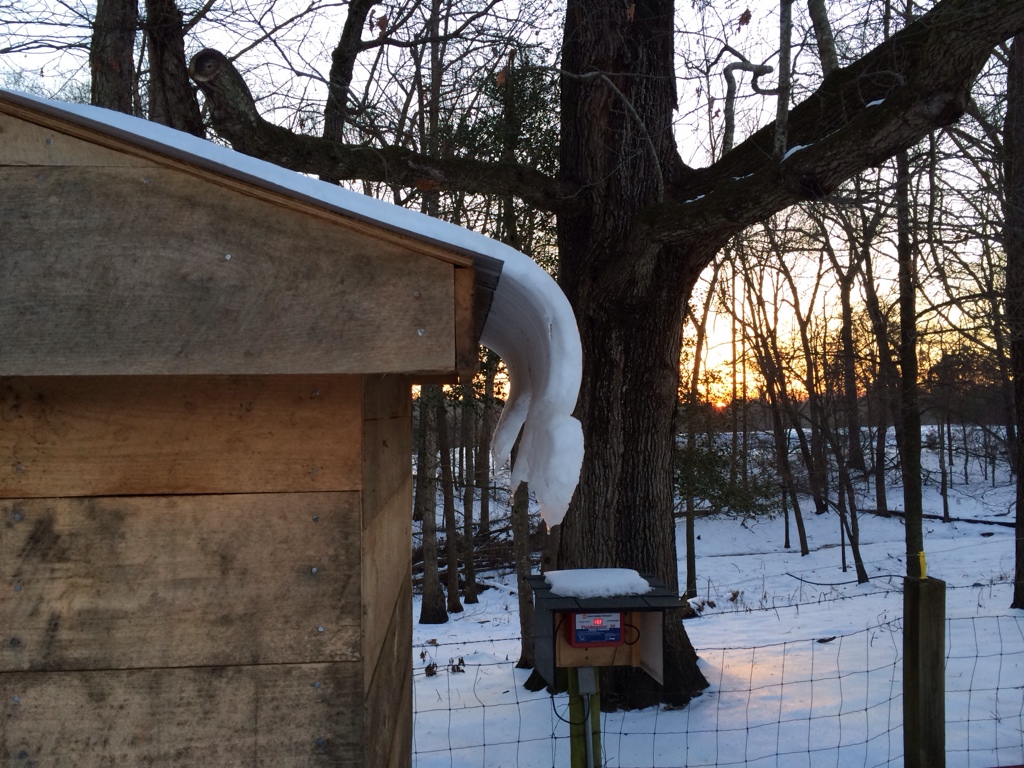
The blast of warm weather has made me think winter will actually end before I die of cold. It also reminded of this picture of the snow melting and curling from our smokehouse against the sunrise. Thanks to Gen for pointing this out. I had walked right by it.
Did I see snow in the forecast for Wednesday?! Argh!
I know more about business than I know about farming. When I’m trying to keep up with the latin names for different varieties or discussing the various breeds of cows with a real cattleman, I feel like a neophyte compared to people who’ve done it all their lives. However on the business side of things I feel like I’m in better shape. Apparently, according to this well written article, we farmers need a batch of business. This especially is true for organic or sustainable farmers. It’s an interesting read.